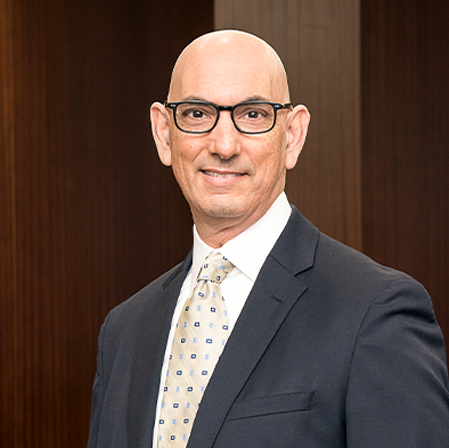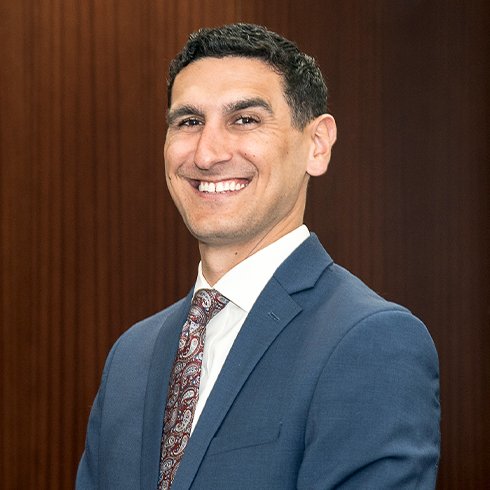Construction sites are inherently hazardous environments where accidents can happen at any time. The nature of the work, involving heavy machinery, dangerous tools, and precarious heights, makes construction workers particularly vulnerable to injuries. When a construction accident occurs in Maryland, determining liability can be complex. Often, the focus is on whether the responsibility lies with the employer or a third party. Understanding the nuances of liability in construction accidents is crucial for injured workers seeking compensation for their injuries. This discussion will explore the distinctions between employer liability and third-party claims in Maryland construction accidents.
Employer Liability in Maryland Construction Accidents
In Maryland, employers bear a significant responsibility for ensuring the safety of their employees on construction sites. Under the Maryland Workers’ Compensation Act, employers are required to provide workers’ compensation benefits to employees who are injured on the job. Workers’ compensation is a no-fault system, meaning that injured employees are entitled to receive benefits regardless of who was at fault for the accident. This system is designed to provide prompt medical treatment and wage replacement benefits to injured workers without the need for litigation.
However, the trade-off for these benefits is that employees are generally prohibited from suing their employers for additional damages, such as pain and suffering. The workers’ compensation system is meant to be the exclusive remedy for employees injured on the job. This exclusivity rule means that even if the employer’s negligence contributed to the accident, the injured worker typically cannot pursue a lawsuit against the employer for damages beyond what is provided through workers’ compensation.
Employer liability in construction accidents is often linked to the employer’s duty to maintain a safe working environment. This duty includes ensuring that all equipment is properly maintained, that workers are adequately trained, and that safety protocols are strictly followed. If an employer fails to meet these obligations, it could result in dangerous conditions that lead to accidents. However, due to the no-fault nature of workers’ compensation, proving employer negligence is not necessary for an injured worker to receive benefits.
Despite the broad protections offered by workers’ compensation, there are circumstances where employer liability can extend beyond workers’ compensation. For example, if an employer intentionally causes harm to an employee or if the employer’s actions are so egregious that they rise to the level of gross negligence, the employee may have grounds to pursue additional legal action. These cases are rare, but they highlight the complexities involved in determining employer liability in construction accidents.
Third-Party Claims in Maryland Construction Accidents
While workers’ compensation provides important protections for injured employees, it does not preclude the possibility of pursuing claims against third parties who may be responsible for the accident. A third-party claim is a lawsuit filed against someone other than the employer who may have contributed to the construction accident. Third-party claims are significant because they allow injured workers to seek additional compensation beyond what is available through workers’ compensation.
Third-party liability in construction accidents can arise in various situations. For instance, if a construction worker is injured due to a defective piece of equipment, the manufacturer or distributor of that equipment may be held liable. Similarly, if a subcontractor’s negligence causes an accident, the injured worker may be able to file a claim against the subcontractor. Other potential third parties in construction accident cases include property owners, general contractors, and architects.
Amazing firm. Went above and beyond in making me feel welcomed, informed, and at ease considering the serious reasons for me being there. It was my first time dealing with something like this and it was comforting knowing I had a whole team behind me working to get the best outcome possible which they did. Highly recommend this firm to anyone looking for a good reliable lawyer who will work with you and be considerate of your well being.” - Daniel Torres
Unlike workers’ compensation claims, third-party claims are based on the concept of negligence. To succeed in a third-party claim, the injured worker must demonstrate that the third party owed a duty of care, breached that duty, and caused the worker’s injuries as a result. This often involves proving that the third party failed to take reasonable steps to ensure the safety of the construction site or that they created hazardous conditions that led to the accident.
One of the key benefits of third-party claims is that they allow injured workers to seek compensation for damages that are not covered by workers’ compensation, such as pain and suffering, emotional distress, and loss of consortium. These damages can be significant, particularly in cases where the worker’s injuries are severe and life-altering. Additionally, third-party claims may also allow for the recovery of punitive damages, which are intended to punish the third party for particularly reckless or malicious conduct.
It is important to note that pursuing a third-party claim does not affect an injured worker’s right to receive workers’ compensation benefits. In fact, many construction accident cases involve both a workers’ compensation claim and a third-party claim. However, there are legal considerations that must be addressed, such as the issue of subrogation, where the workers’ compensation insurer may seek reimbursement for benefits paid out if the worker successfully recovers damages from a third party.
The Intersection of Employer and Third-Party Liability
In some construction accident cases, there may be overlapping liability between the employer and a third party. For example, if a worker is injured due to a fall from scaffolding, both the employer and the scaffolding manufacturer could potentially be held liable. The employer may be responsible for failing to ensure that the scaffolding was properly assembled and maintained, while the manufacturer may be liable for producing a defective product.
When both employer and third-party liability are involved, the injured worker may pursue multiple avenues for compensation. However, navigating these claims can be complex, particularly when it comes to determining the proportion of liability between the parties. Maryland follows the doctrine of contributory negligence, which means that if an injured worker is found to be even slightly at fault for the accident, they may be barred from recovering damages in a third-party claim. This makes it essential for injured workers to have strong legal representation to protect their rights and maximize their recovery.
Value of a Personal Injury Case Choosing a Personal Injury AttorneyRelated Videos
In cases where multiple parties are liable, the concept of joint and several liability may also come into play. Under Maryland law, if multiple defendants are found to be responsible for the worker’s injuries, each defendant can be held individually responsible for the entire amount of damages. This means that the injured worker can recover the full amount of their damages from any one of the liable parties, who can then seek contribution from the other responsible parties. Joint and several liability is particularly important in construction accident cases where one of the liable parties may have limited financial resources or insurance coverage.
Common Scenarios of Third-Party Liability in Construction Accidents
Third-party liability in construction accidents can arise in a variety of scenarios. One common example is when a construction worker is injured by a piece of machinery that malfunctions due to a defect in its design or manufacturing. In such cases, the injured worker may have a valid claim against the manufacturer of the equipment. Another example is when a worker is injured due to the negligence of a subcontractor who failed to follow proper safety procedures. This could include situations where a subcontractor leaves debris or tools in an area that poses a tripping hazard, or where a subcontractor fails to properly secure materials that later cause an injury.
Property owners can also be held liable in construction accidents, particularly if the accident occurs on premises that are under the owner’s control. For example, if a construction worker is injured due to a hazardous condition on the property, such as an unstable structure or unsafe access routes, the property owner may be liable if they knew or should have known about the danger and failed to address it.
Architects and engineers may also be liable in construction accidents, particularly if the accident is related to design flaws or errors in the planning phase of the project. For instance, if an architect designs a building with inadequate support structures, and this leads to a collapse that injures workers, the architect could be held liable for those injuries.
In some cases, liability may extend to multiple third parties, such as when an accident is caused by a combination of factors, including defective equipment, poor site management, and hazardous property conditions. In these situations, it is critical to thoroughly investigate the circumstances of the accident to identify all potential sources of liability and ensure that the injured worker receives full compensation for their injuries.
Verdicts & Settlements
Legal Considerations and Challenges in Maryland Construction Accident Claims
Pursuing a construction accident claim in Maryland can be challenging due to the complex interplay of workers’ compensation laws, third-party liability, and the doctrine of contributory negligence. One of the primary challenges is determining the extent of liability for each party involved in the accident. This often requires a detailed investigation of the accident, including gathering evidence, interviewing witnesses, and consulting with specialists in construction safety and engineering.
Another challenge is the potential for contributory negligence to bar recovery in third-party claims. Under Maryland’s strict contributory negligence rule, if the injured worker is found to be even one percent at fault for the accident, they may be completely barred from recovering damages in a third-party lawsuit. This makes it crucial to build a strong case that clearly establishes the third party’s negligence as the primary cause of the accident.
Additionally, the statute of limitations is an important legal consideration in construction accident claims. In Maryland, the statute of limitations for filing a personal injury lawsuit is generally three years from the date of the accident. However, this time limit can vary depending on the specific circumstances of the case, such as when the injury was discovered or when the negligence was uncovered. It is essential for injured workers to act quickly to protect their rights and avoid missing the deadline to file a claim.
When pursuing a third-party claim, injured workers must also be aware of the potential impact on their workers’ compensation benefits. While workers’ compensation provides immediate financial support, any recovery from a third-party lawsuit may be subject to subrogation, where the workers’ compensation insurer seeks reimbursement for the benefits it has paid. This can reduce the overall amount of compensation that the injured worker ultimately receives.
Seeking Legal Representation for Maryland Construction Accidents
Given the complexities and challenges involved in construction accident claims, it is crucial for injured workers to seek legal representation from an experienced attorney who understands Maryland’s laws and regulations. An attorney can help navigate the legal process, protect the worker’s rights, and ensure that all potential sources of compensation are pursued. This includes filing workers’ compensation claims, investigating third-party liability, and litigating claims in court if necessary.
For workers who have suffered serious injuries in construction accidents, the stakes are high. The financial and emotional impact of these accidents can be devastating, affecting the worker’s ability to earn a living, support their family, and enjoy life. With the right legal representation, injured workers can focus on their recovery while their attorney fights for the compensation they deserve.
At the bottom of this long road lies the crucial decision of choosing the right law firm to represent your interests. Alpert Schreyer, LLC has a dedicated team that is well-versed in handling complex construction accident cases in Maryland. If you or a loved one has been injured in a construction accident, we encourage you to reach out to us. Our experienced attorneys will provide the guidance and support you need to navigate the legal process and secure the compensation you deserve. Contact Alpert Schreyer, LLC today to schedule a consultation and take the first step towards protecting your rights and your future.
















